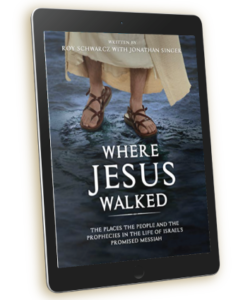Baptism
Shortly before He ascended into heaven, Jesus gave His apostles The Great Commission (Mt 28:18-20). In the gospel of Mark, The Great Commission is worded a little differently (Mk 16:15-16). In both places we see his emphasis on baptism. In Matthew, it is related to the process of making disciples. In Mark, it is mentioned in connection with salvation. Whatever the purpose of baptism, it must be important to Yeshua, because He commanded it!
In the first gospel sermon, Peter commanded people to be baptized “for the remission of sins” (Acts 2:38). After exhorting his audience to be saved, the response was for them to be baptized (Acts 2:41-41). In the first gospel sermon to the Gentiles, Peter followed up by commanding his audience to be baptized (Acts 10:44-48). It is evident that what Peter commanded involved a baptism in water. Peter’s preaching was in harmony with the statements of Jesus in the Great Commission: Preach the gospel, and command people to be baptized.
Philip in his ministry to the Samaritans called for their response to faith in Yeshua to be baptized (Acts 8:12). We are not told what Philip taught the Ethiopian Eunuch, but we can deduce that it included baptism (Acts 8:36-38). Like Peter, Philip not only taught about Yeshua but also what He commanded, baptism was the immediate response to his message.
Paul, in his ministry to Lydia taught that she too needed to be baptized and in obedience to the Lord she was (Acts 16:13-15). The Philippian jailor was taught that he must believe on the Lord to be saved. His response to the message of Paul was for him and his family to immediately be baptized (Acts 16:31-34).
In Paul’s own conversion he shares how he was told to go to Damascus, where he would be told what he must do Acts 9:6. One of the things that he was told was to be baptized without delay (Acts 22:16). Baptism builds on what was taught to Israel.
Baptism as a rite of immersion was not begun by Christians but was taken by them from Jewish teachings. The term mikveh in Hebrew literally means any gathering of waters, but in Jewish law speaks of the waters for the ritual of immersion. The high Priest, before he could conduct the service on the Day of Atonement had to be immersed. Before the regular priests could participate in the Temple services, had to be immersed. All priests before they could begin their priestly duties needed to be immersed. Before a scribe wrote the name of God, as well as in several other occasions they too needed to be immersed.
The New Covenant tells us that many of the early church’s daily activities were centered on the Temple. There were many ritual immersion baths (mikvaot) on the Temple Mount including one in the Chamber of Lepers situated in the northwest corner of the Court of Women. The Temple itself contained immersion baths in various places for the priests to use.
There are six orders of ritual baths in the Mishnah and the highest order is a spring or flowing river also known as “mayim chaim” or living waters. We see Yeshua’s understanding and fulfilling this order in Matthew 3:16 as He comes to be baptized in the Jordan River “fulfilling all righteousness.” This highest order of Living Water, is one of the reasons Jesus used this term concerning Himself (John 4:10-11).
To the religious Jew, the mikveh was for spiritual purification and cleansing, especially to the various types of ritual defilement when the Temple was in use. From the amount of space given to it in Scripture, and the effort of Jesus to fulfill it, the command is most important.
Jewish baptism has never been taken lightly; immersion was to be performed in the presence of witnesses. Purification from defilement was done primarily through water, while other effects of sins are covered by the sacrificial blood (Romans 4:7; Heb. 9:22).
The concept of immersion in rabbinic literature is referred to as a new birth. The baptismal water (Mikveh) in rabbinic literature was referred to as the womb of the world, and as a convert came out of the water it was considered a new birth separating him from the pagan world. As the convert came out of these waters his status was changed and he was referred to as “a little child just born”. We see the New Testament using similar Jewish terms as “born anew,” “new creation,” and “born from above.”
One of the most important teachings in Judaism is that of repentance. According to both Scripture and rabbinic literature, no matter how great the sin, if a person repents and forsakes his sin before God he can be forgiven. As we see in the case of John, Peter, Paul and all New Testament writers, repentance was always involved. The Dead Sea Scrolls as well as the New Testament teach that water can purify the body only if the soul has first been purified through repentance and righteousness.
Water is used in Scripture for cleansing in relation to the ashes of the Red Heifer (Numbers 19); in the consecration of the priest to ministry (Lev. 8:6); in cleansing the leper (Lev. 14:1-8); In the initiation of Israel in its journey to the Promised Land (1 Cor. 10), It is a picture of death and resurrection (Rom. 6).
In the Older Covenant circumcision was considered the token of God’s covenant, and in the New Covenant we see the same wording concerning baptism as it is referred to as “circumcision made without hands” (Colossians 2:11-12). Yeshua was immersed and calls us to be immersed (Mat. 3:14-17; Mat. 28:19-20).
Scripture describes many baptisms but the most important is the baptism of the Holy Spirit. This occurs when a person responds to the work of God’s Spirit in their hearts and minds by repenting of their sin and placing their faith in the shed blood of Yeshua for their atonement. The response to that saving faith is to follow the Lord in immersion through water baptism.
Water baptism is like a photograph which is a picture and event that has already occurred. It is a public demonstration and confession of a faith that is already present. This is why it is important to be done in a way where the person publicly confesses his faith in the work of Yeshua in their lives and their willingness to follow the Lord in baptism.


